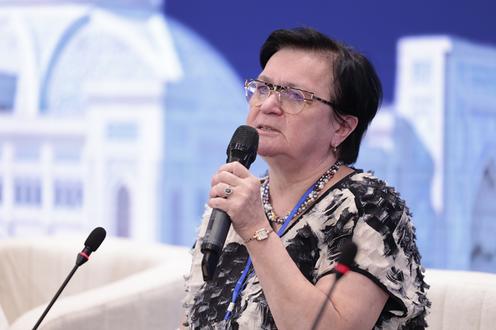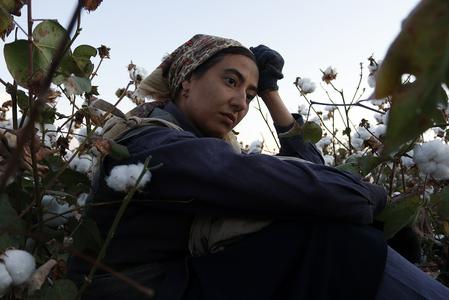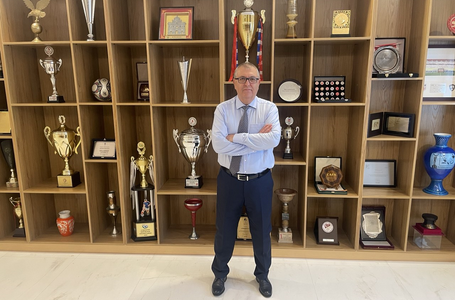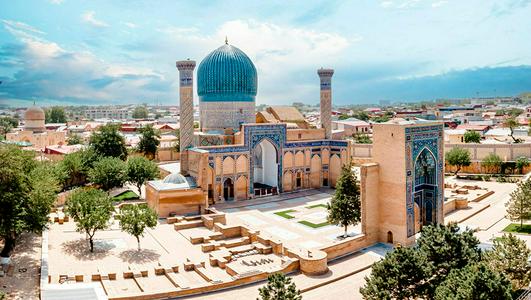Irina Popova, Director of the Institute of Oriental Manuscripts of the Russian Academy of Sciences, shared her thoughts on Uzbekistan’s Center of Islamic Civilization (CIC).
— You are actively involved in developing the museum’s exhibition. What do you think of the result?
— In a word — magnificent. It is the result of enormous work by many people: professionals, curators, researchers, and artists. This is a collaborative effort, and it truly impresses. On one hand, the Center of Islamic Civilization is the product of immense collective labor; on the other, its approach is genuinely comprehensive: it presents the history of Uzbekistan from its origins to its highest achievements. Moreover, the project embodies a strong national and patriotic idea — a confirmation of the greatness of the people who live here. It evokes pride in everyone who visits.
I would like to emphasize that the exhibition is designed for all ages and levels of knowledge. There is something to see and learn for both experts and children. There are many interactive zones where one can quite literally “step into” a historical era. This is the right approach — it allows visitors to physically feel part of the world they live in. It is very important that the state, with presidential support, is reviving and promoting the humanitarian dimension of scholarship — the study of language, history, and religious culture. It is within such an environment that a new generation grows up. There are countries that, unfortunately, have lost much of their youth — perhaps not forever, but for a long time. Without attention to the humanities, there is no future. In this sense, the Center is not merely a museum but an investment in tomorrow: by studying the past, we shape the future.
— Recently, President Shavkat Mirziyoyev spoke at the United Nations General Assembly, emphasizing the humanistic nature of Islam. What do you think about that?
— That is a very true statement. Attitudes toward Islam in the world are mixed, and it is all the more important to highlight its humanistic essence — its call for love, friendship, and compassion. Understanding this side of Islam is essential for an objective assessment of its contribution to world civilization. The creation of such a grand center helps convey this very idea.
— What about the collection? Are there artifacts of the “worth-traveling-for” kind — the museum equivalent of “three Michelin stars”?
— In fact, every museum piece is unique. The objects here are authentic; I specifically asked about the percentage of replicas — around 10%, which is a good ratio. Personally, I was particularly fascinated by the Sogdian amulets and everything related to the civilization of the Great Silk Road. The Sogdians were key intermediaries along the trade routes, and these threads are shown here in a very vivid way — from ancient colonies to the subjects of papermaking and sericulture. This theme is close to me professionally, as I study this period and medieval China. The exhibition clearly illustrates how the northern and southern routes developed and what role the Sogdians played. The section on Chach (Tashkent), known from Chinese sources, is also of great interest. For cities like this, international academic recognition is important — and the Center reinforces it. The section on the “heavenly horses,” for which early Chinese embassies were sent, is both visually and intellectually striking. I also plan to take a closer look at the sections on the “Renaissances” and modernity — how a majestic history is reflected in today’s world.
— What about manuscripts? For example, the Qur’an — are there any unique copies?
— Every manuscript is unique: the text may be the same, but the handwriting, decoration, and binding make each copy distinctive. Facsimile editions are also a wonderful practice. For instance, the facsimile of the famous Uthman Qur’an has a remarkable history — its leaves reached the Institute of Oriental Studies in Leningrad thanks to the intuition of Ignaty Krachkovsky. In recent years, several additional leaves have been discovered here in private collections, and the most complete set of known pages has now been published — though perhaps there are still undiscovered fragments elsewhere.
— Could the Center host temporary exhibitions featuring original manuscripts from collections abroad?
— Not on a permanent basis — institutions like the Institute of Oriental Manuscripts safeguard their countries’ national treasures. But temporary exhibitions are possible, provided that all conservation and legal requirements are met.
The Center of Islamic Civilization was built in Uzbekistan’s capital near the Khast Imam complex. Designed in the style of medieval architecture, the building features four portals 34 meters high and a central dome 65 meters tall. It includes a Quran Hall, a 460-seat conference hall, and a museum whose exhibitions cover the history of Uzbekistan from pre-Islamic times to the present day. The CIC is intended as a venue for studying and reinterpreting the country’s heritage in cooperation with the International Islamic Academy of Uzbekistan and research and educational centers worldwide.










